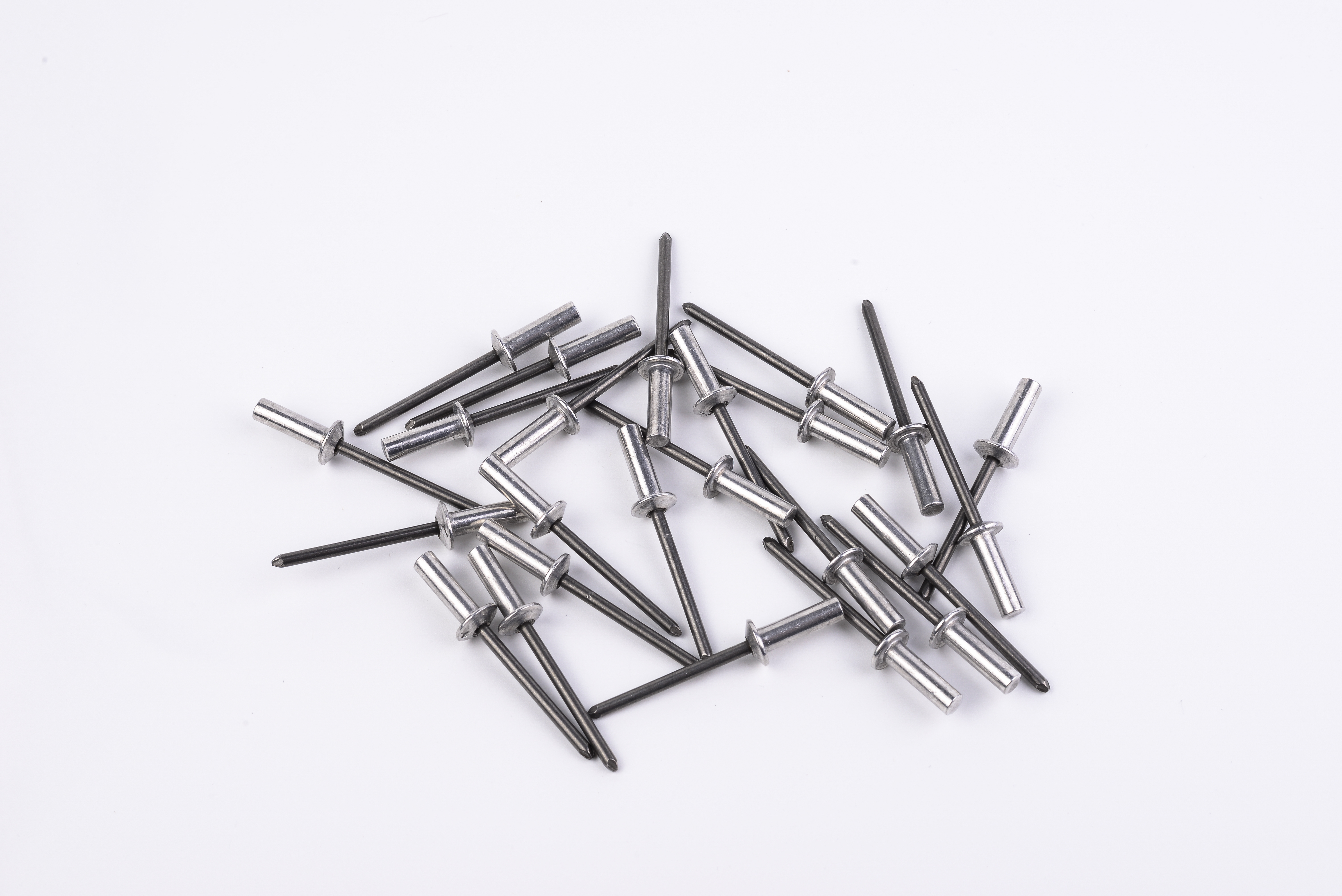A rivet is a nail-like object used to join two parts (or components), with a through hole and cap on one end. When riveting, the riveted parts are connected by self-deformation or interference.
Types and uses of rivets:
1. The fan rivets are specially designed for manual installation. It pulls out of a hole in the panel or chassis. It is made of elastic material with good toughness, clever design and elastic function. It is not easy to slide out after being pulled in with the corresponding holes. FIXPAL rivets are mainly used to be fixed between the fan, radiator and chip of the electronic computer chassis, and have the function of anti-vibration and noise reduction.
2. Blind rivets are a new type of riveting fasteners that are very convenient for riveting. Punch rivets can demonstrate their unique advantages in relatively narrow spaces, or in environments where riveting guns are not available or cannot be used. Two or several connected parts can be successfully riveted by tapping the nail core on one side with a hammer or other object. According to the shape of the rivet cap edge, Blind rivets can be divided into flat head blind rivets and countersunk head blind rivets.
3. The types of rivets can be roughly divided into open type blind rivets, closed type blind rivets, Multi-grip rivets and Uni-grip rivets series.
4. Countersunk blind rivets: riveted parts with a smooth and beautiful surface after riveting.
5. Multi grip pop rivets: When riveting, the nail core pulls the end of the rivet body into a double-cylinder, clamping the two structural components to be riveted and reducing the pressure on the surface of the structural components. Mainly used for riveting various thin structural components in automobiles, ships, construction, machinery, electronics and other industries.
6. Large flange head blind rivets: Compared with ordinary core rivets, the diameter of the aluminum cap is significantly increased. When riveting joints, the rivet contact area is larger, the supporting surface is stronger, the torque strength is enhanced, and the rivet can withstand higher radial tension. Applicable industries: Suitable for fastening soft and fragile surface materials and super holes, increasing the diameter of the brim, and has special protection applications for soft materials.
7. Closed end blind rivets: specially designed for the head of the mandrel after riveting, very suitable for various waterproof requirements. High shear force, resistant to vibration and high pressure.
8. All-aluminum pop rivets: The rivet body is also made of high-quality aluminum wire. It is beautiful, durable and free of rust after riveting. Compared with ordinary core rivets, rivets have lower riveting strength and are suitable for connectors with softer materials.
9. Open end stainless steel rivets: This rivet is the first choice for high tensile strength and corrosion resistance.
10. Flat head rivets: Mainly used for riveting metal plates or non-metallic materials such as leather, canvas, and wood.
11. Semi tubural rivets: mainly used for riveting situations with small load.
12. Tubural rivets: light weight, weak nail head, used for riveting non-metallic materials, small load.
Tips when purchasing rivets:
1. When checking the finished blind rivets: Consider the rivet diameter, rivet stem length, rivet head thickness and cap diameter, total mandrel length, nail core exposed size, nail cap size and assembly outer diameter. In the actual inspection, the weak links of the product can be measured, such as tensile strength, shear strength, and nail core links.
2. The key is to pay attention to the rivets. The riveting is not enough and whether the riveting is in place; or the rivet mouth cannot be pulled off because the nail core cap is too large; and there is also a jump head, which means that the tensile breaking force of the nail core is too low or the fracture size is too thin.
3. Rivet material: aluminum, iron, stainless steel, alloy, etc.
4. The total thickness of the workpiece is generally 45-65 points of the rivet length, and it is recommended not to be higher than 60 points. In addition, it is troublesome if the working length is too short. The general recommended standard is 50-60 points. The rivet length is too long, the rivet pier is too large, and the nail rod is easy to bend; the rivet length is too short, the pier thickness is insufficient, and the nail head is incompletely formed, affecting the strength and tightness. The length of the rivet is too long or too short. Only the appropriate length can achieve good riveting effect.
Post time: Oct-19-2023





